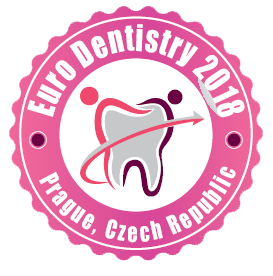
Jyoti Shrestha Takanche
Chonbuk National University School of Dentistry, Republic of Korea
Title: Phelligridin D-loaded oral nanotube titanium implant support bone formation and osseointegration in rat mandible
Biography
Biography: Jyoti Shrestha Takanche
Abstract
The major causes of implant failure are poor bone quality and osteolysis in dentistry. Phellinus baumii has been traditionally used as a medicine in Korea, Japan and China. Phellinus baumii extract exhibits anti-inflammatory, antioxidant, anti-obesity, and anti-platelet activities. Phelligridin D belongs to the family Hymenochaetaceae isolated from the mushroom Phellinus baumii. In this study the effect of Phelligridin D loaded on titanium (Ti) nanotube implant surface for bone formation around implant were tested. The purpose of this study was to enhance osseointegration of Phelligridin D loaded implant to the bone, prevent from osteolysis support bone formation. Cell viability, crystal violet staining, western blot, alizarin red S staining, alkaline phosphatase activity, tartrate-resistant acid phosphatase staining, micro-computed tromography (µ-CT), haematoxylin and eosin (H&E), and immunohistochemical staining were used in vitro and in vivo for the biocompatibility of Phelligridin D as a potential osseointegration. Phelligridin D promoted osteoblastic differentiation and mineralization by increased of bone morphogenic protein-2/7 (BMP-2/7), osterix, Runx-2, osteoprotegerin (OPG), alkaline phosphatase, and reduced osteoclast differentiation by inhibition of receptor activator of nuclear factor kappa-B ligand (RANKL) in MC-3T3 E1 cells. Also, Phelligridin D supported bone formation around nanotube Ti implant surface through the increment of BMP-2/7 and OPG, and confirmed by µ-CT and H&E staining in rat model. Also, Phelligridin D inhibited osteolysis molecule, RANKL. These finding support that Phelligridin D as a new compound represents a promising candidate for the treatment of implant failure due to osteolysis and poor bone quality in teeth.

